Mississippi River Viking Cruise
The folklore of this famous river is told in supreme comfort by those who feel its water running through their veins.
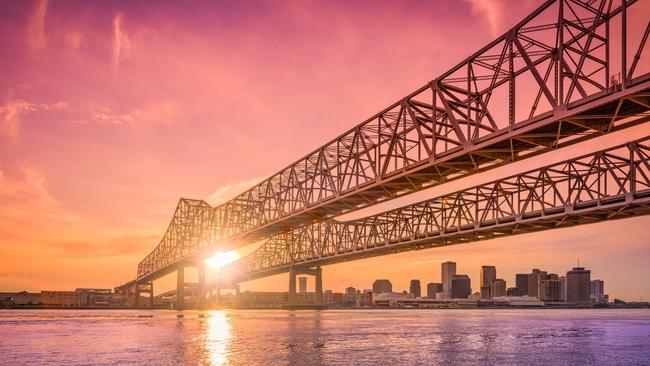
It’s an unusual location for a buffet dinner and one that rounds out the year at that. Over there near a selection of Cajun and southern dishes, a purple 1956 Cadillac Eldorado convertible, sleek and with space-age fins, which is not far from a 1962 Lincoln Continental, white with a gold alligator top. And here at my elbow, Elvis Presley’s pink 1955 Cadillac Fleetwood, which he gave to his mother Gladys even though she had no driver’s licence.
We are in the “garage” at Graceland in Memphis on a private after-hours visit near the end of a holiday-season cruise from New Orleans on board a new ship, Viking Mississippi. As well as feasting among the autos, we have visited extensive galleries of Elvis memorabilia, including the first vinyl single he recorded in 1954 at Sun Studio, That’s All Right, and the original contract he signed a year later with RCA, witnessed by his father Vernon and notorious manager Colonel Tom Parker. It’s hard not to think of Tom Hanks in his role as Parker, and an exhibition on the making of Baz Luhrmann’s movie Elvis has recently opened at Graceland. There are also jumpsuits, remarkably svelte, and bling to bedazzle a thousand Las Vegas audiences.
On a tour of the mansion, which is compact and adorned with the Christmas decorations Elvis liked on display until his birthday on January 8, the rooms upstairs are shut to visitors: it is where he died, but also private quarters for his daughter and heir to Graceland, Lisa Marie, who has visited in the festive season. It is poignant to learn within a fortnight Lisa Marie has died and is now buried in the small cemetery adjacent to the house, alongside Elvis and her son Benjamin, who committed suicide three years ago.
Graceland is a show-stopping finale to the week-long Viking Mississippi voyage, memorable for its regional cuisine and music. We have sailed north from New Orleans, birthplace of jazz, about 1000km to Memphis, cradle of the blues, soul and rock. If that music floats your boat, grab a banjo and let’s start rolling on the river.
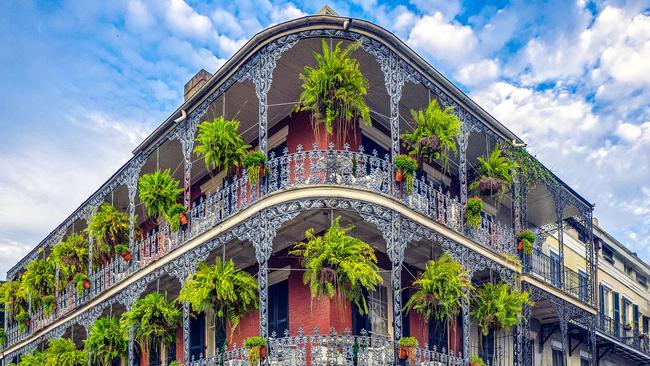
The Lower Mississippi is not the most scenic waterway. The river is muddy, levees and banks high and the terrain flat. It’s the romance of the working river that grabs my heart and soul.
At 3734km from its source in Lake Itasca, Minnesota, to the Gulf of Mexico, the Mississippi is just short of the US’s longest river, the Missouri, which becomes a tributary. The Mississippi, down the heart of the nation, has been a great commercial route (it ships 60 per cent of export grain) and a migration path for fishes, birds and, of course, humans from Native Americans to the Spanish, French, British and early American explorers.
It carried black people to their enslavement, and fleeing and emancipated ones north in the hope of a better life. And it was a focus of a war that divided a nation by state, town and sometimes family.
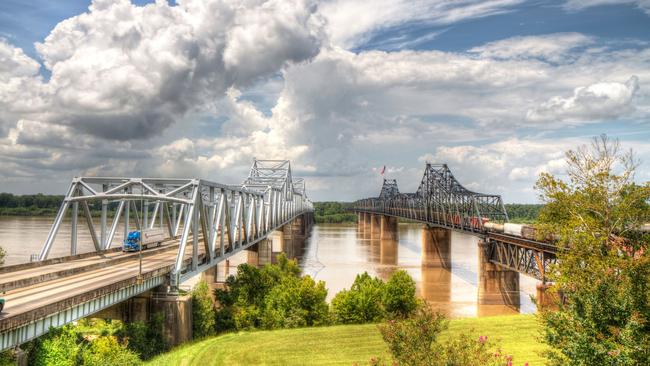
It’s the grunt power of towboats, moving up to 40 cargo-laden barges along the river under characteristic cantilevered bridges, that amazes. After they pass, the waterway can be serene as we sail between banks lined with willow, cottonwood and birch trees, and only scattered traces of settlement other than the historic cities we pass through, including Baton Rouge (although we don’t dock on Christmas Day), Natchez and Vicksburg. We sail by the states of Louisiana, Mississippi and Arkansas before arrival in Tennessee.
A constant concern on the Mississippi is flooding, although in recent years dry conditions along its course (the river “drains” more than 30 states and two Canadian provinces) have caused very low water levels, an impediment to navigation. Back in 1879, the Mississippi River Commission was set up to prevent floods, although Mark Twain, once a steamboat pilot, warned in his memoir, Life on the Mississippi, “Ten thousand river commissions … cannot tame that lawless stream, cannot curb it or confine it, cannot say to it, Go here or go there, and make it obey.’’
Twain captured the spirit of people who work on the river, observing, “your true pilot cares nothing about anything on earth but the river, and his pride in his occupation surpasses the pride of kings”.
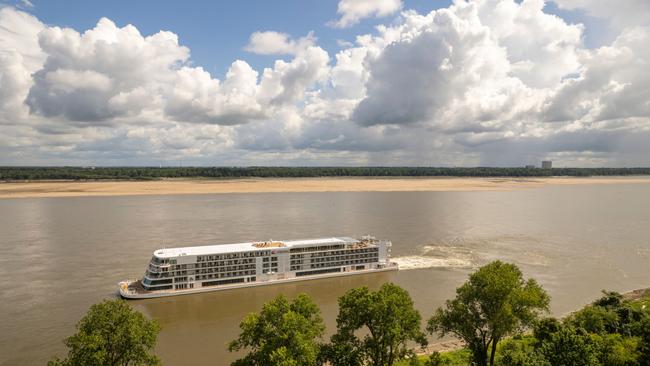
Kenny, pilot on Viking Mississippi, is perfect for the part, 50 years on the river from age 17. He says he has “brown water” in his veins and knows all about depths and widths and speeds. “The river gets so fast, turning a bend can be tricky,” he confesses. Captain Mike knows the river well, too, and has been associated with this ship since its construction in Louisiana and rollout early last year. In one of the informative sessions that are a feature of shipboard afternoons, he talks of the river’s dynamic environment above and below water. The peculiarities of its behaviour are often relayed in an old-school, word-of-mouth exchange between crews as vessels silently pass.
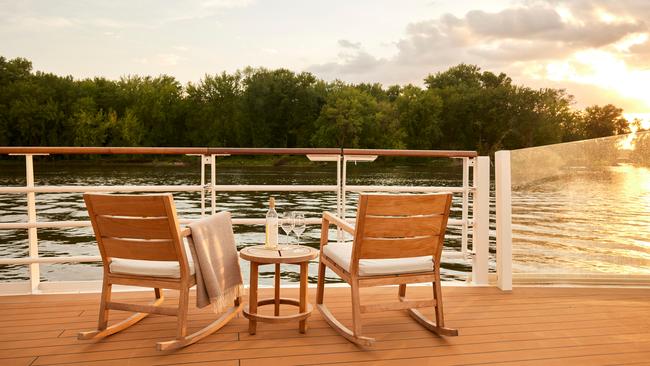
Mississippi, Viking Cruises’ sole river ship in the US, draws on the line’s trademark Nordic design of its other river and ocean-going vessels, but with a local twist. Think Huckleberry Finn in Finland, with Tom Sawyer-inspired murals in stairwells blending with a creative collection that includes Norwegian folk art. And no, it’s not a faux paddle-steamer. On five public decks it can carry 386 passengers in 193 all-outside staterooms.
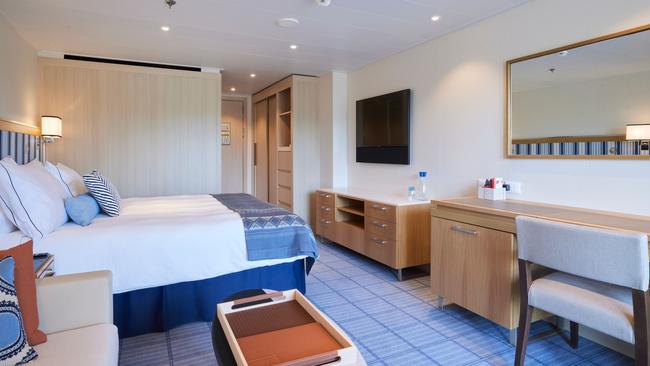
My Deluxe Veranda Stateroom, 215, is Scandi sleek in decor with a king-size bed, two comfy armchairs, desk and minibar, large-screen TV, and a floor-to ceiling sliding-glass door opening to fresh-air seating. There is plenty of wardrobe space and the bathroom, stocked with aromatic Freyja products, isn’t cramped. Each cabin has individual climate control.
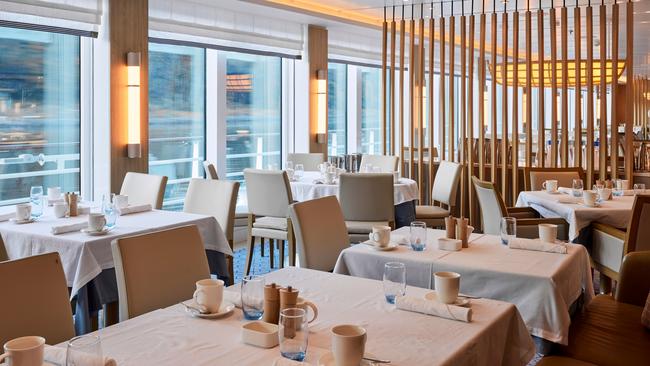
Dining is in The Restaurant, with allocated seating, table service and included wine and beer, or in the buffet-style River Cafe. Menu choices include American “classic” and destination-inspired dishes, with a Mamsen’s counter serving specialties such as Norwegian pancakes and herrings. The New York strip steak and salmon are reliably good, but I’m keen on Cajun shrimp and creole catfish, with maple pecan bread pudding to follow.

The two-deck Explorers’ Lounge affords splendid panoramas and there is a sun terrace with infinity plunge pool, but our trip comes in the wake of a US-wide polar blast so there is little desire to dip a toe. The Living Room, with furniture demanding to be taken home and a library curated by London bookseller Heywood Hill, is the relaxed venue for talks and intimate performances capturing the musical heritage of the South. That means jazz and the blues, but also gospel, folk songs, music of the Civil War (soldiers of the North and South took effort to turn anthems of the opposing side into derisory parodies), country and Memphis soul.
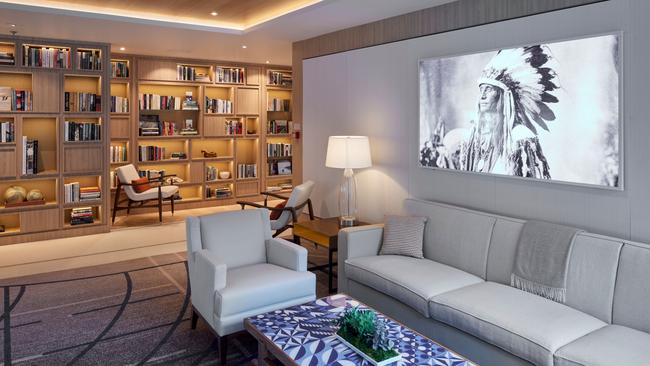
At each port, there is a complimentary shore excursion and others at cost, conducted in an impressive fleet of coaches that shadows the ship by road. The excursions are led by knowledgeable locals.
In Natchez, a small and elegant city that has attracted newcomers in the Covid working-from-home era, we are off to admire antebellum (it simply means, before the [Civil] War) architecture, aka southern mansions. We tour a grand Greek Revival brownstone. Magnolia Hall, built by widowed cotton planter and merchant Thomas Henderson for his family, who were served by six slaves. The property is run by the Natchez Garden Club. Away from this proper part of town was the improper Natchez-Under-The-Hill, down on the river bank, where steamboat sailors let off their own steam in saloons, gambling dens and brothels. A remnant of those rowdy times, the Blue Cat Club, gave a 13-year-old Jerry Lee Lewis his first paid music job.
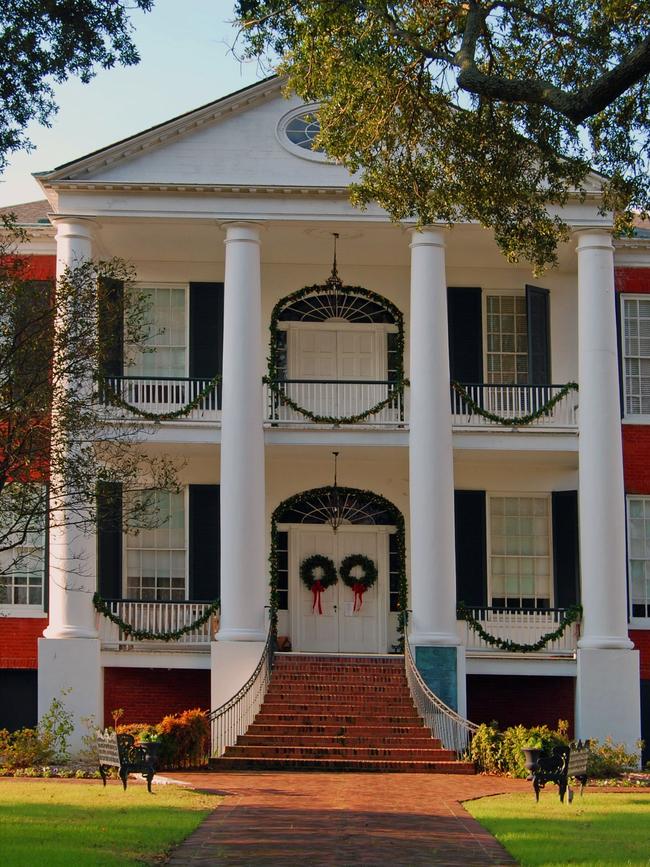
Natchez played a significant role in the civil rights movement of the mid-1960s. One of the onboard speakers, Bobby Dennis, who heads the local Museum of African-American History and Culture, gives an insight into the complex nature of historic race relations. The museum, with a collection of photos and personal letters, has one purpose: “We exist to tell our story.”
In Vicksburg, scene of a siege that, along with Gettysburg, ensured victory for the North in the Civil War, my group strikes it lucky with battlefield guide Rick Martin, a retired chief of operations at the National Military Park. An ex-serviceman, Martin recreates the drama of the 46 days of the 1863 siege leading to a Confederate surrender on July 4, giving Unionists strategic control of the Mississippi. President Abraham Lincoln said, “The Father of Waters again goes unvexed to the sea.” But it is our guide’s humanity that impresses. In the marble Illinois Memorial he selects one name, Albert Cashier, from the 36,325 on a wall commemorating that state’s soldiers who served at Vicksburg. A retiring but well-regarded individual, Albert was revealed to have been born a female, Jennie Hodgers, when admitted to hospital after the war. In later years, suffering from dementia, Albert was confined to an asylum and made to wear women’s clothes. Unaccustomed to long skirts, he tripped, ending his life. It’s one sad story from a conflict fought often by youths.
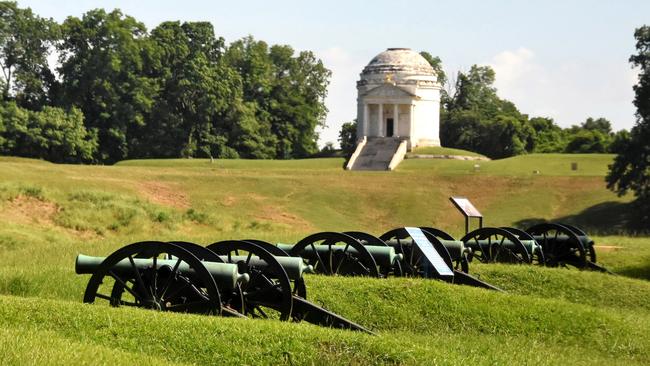
After a visit to the iron-clad gunboat USS Cairo, which sank in the Yazoo River in 1862 but was retrieved and restored a century later, we head back to town where it’s time for the real thing. In a building sporting a Biedenharn Candy Co sign and now a museum, Coca-Cola was first bottled (albeit not in the hobble-skirt glass) in 1894, having previously been marketed as a soda-fountain syrup.
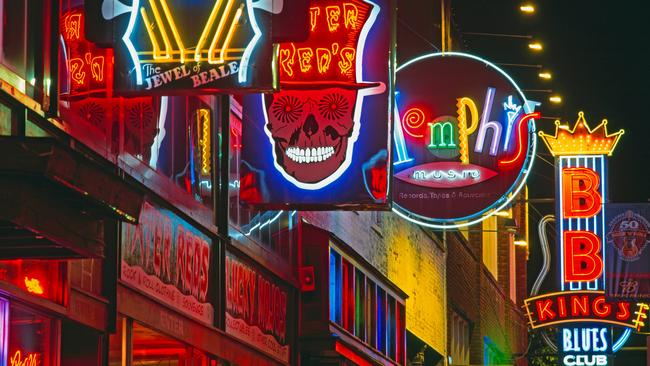
If Bourbon St in New Orleans is a musical celebration of what still is, Beale St in Memphis seems more a celebration of what once was, although BB King’s Blues Club remains a star turn. At the Rock ’n’ Soul Museum, affiliated with the Smithsonian Institution, trace the history of Memphis, Mississippi and Mid-South music. And in a one-time suburban picture theatre, we visit the Stax Museum of American Soul Music, site of “Soulsville USA” Stax recording studio, home to Otis Redding, Booker T and Wilson Pickett. At the Lorraine Motel downtown, a wreath on the balcony marks the spot where Martin Luther King Jr was assassinated. The motel is part of the unmissable National Civil Rights Museum. It is chilling to learn, again just days after my visit, of the police killing of Tyre Nichols not far away.
As I farewell the Mississippi, both river and ship, and head for home, I catch a parting refrain of Paul Robeson singing. “Ol’ man river … Just keeps rolling along.”
Graham Erbacher was a guest of Viking Cruises.

To join the conversation, please log in. Don't have an account? Register
Join the conversation, you are commenting as Logout